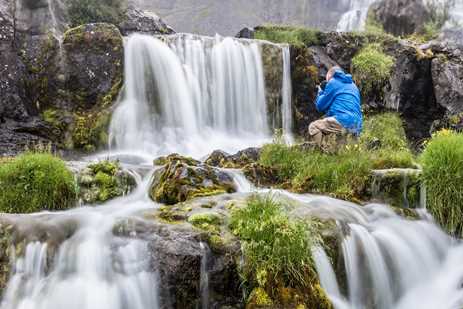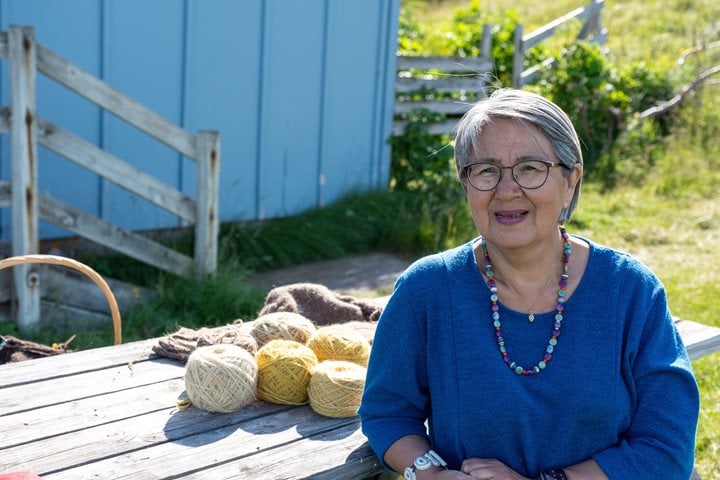Call +1.800.397.3348 or contact your travel advisor
One of the Earth’s most spectacular and remote destinations, the Arctic is an icy wilderness that changes noticeably from region to region and from month to month. Whether you would like to see the dark sky aglow with the aurora borealis or spot a polar bear and her cubs playing in the endless summer sunlight, the month you travel matters.
The company and ship you pick for your Arctic expedition are important as well. Lindblad Expeditions-National Geographic’s small, ice class expedition ships expertly navigate bays and fjords where larger ships cannot venture; and our experienced wildlife spotters and world-renowned naturalists ceaselessly scan the sea and land for the Arctic’s iconic wildlife.
See our portfolio of Arctic expeditions.
When is the Best Time to Visit the Arctic?
The best time for an Arctic Circle tour is in the summer, between June and September, when the sea ice breaks up. The loosened ice allows our ships — purpose built to travel in polar conditions — to explore the region’s more remote areas.
Because of their exceptional ice-class rating, our vessels can even sail icy seas in the spring — as early as late April — allowing guests to witness Arctic landscapes in their quintessential form, when they’re covered in snow and surrounded by sea ice.
Summer is optimal to spot active wildlife like polar bears, whales, walruses, and reindeer. It’s also the best time to enjoy adventures on land, such as hiking on the tundra and encountering the resilient communities that thrive at the top of the world. This season offers the warmest weather, with average temperatures ranging between 37 °F (3°C) and 55 °F (13°C).
When asked to narrow down the best time for an Arctic cruise, Conor Ryan, a naturalist for Lindblad Expeditions-National Geographic says, “There are really good reasons to visit in each of the months we sail the region,” as he explains in detail below.
Find out what to wear on an Arctic expedition.
Visiting the Arctic in June
According to Ryan, there’s often fog in May and June. “To be out on deck and drifting past icebergs in the fog is absolutely stunning and takes you back to the old days of exploration.”
“During this time, the snow melt unveils amazing flora. In places like Greenland, Svalbard, and the Canadian High Arctic, you have these tiny miniature forests of dwarf birch and dwarf willow that you’re walking on top of. It’s no more than a few inches off the ground.
“You have the purple saxifrage and Svalbard poppy, and all these brightly colored flowers that come out in the middle or end of June. For people who are into botany or who have hiked throughout the world but never in tundra, it’s a special environment,” Ryan says.
In June, temperatures across most Arctic destinations average between 37°F (3° C) and 55°F (13°C). If you travel to the globe’s most northerly point on an icebreaker cruise to the North Pole, North Pole summer temperatures average 32° F (0° C). That average drops to -40°F in winter!
Visiting the Arctic in July-August
July and August are peak times to visit the Arctic due to warmer temperatures that allow for active exploration. The weather in the Arctic Circle in July ranges from 43°F (6° C) to 59°F (15°C) depending on where in the region you are traveling, while North Pole temps average 32° F (0° C).
This is the best time to visit Longyearbyen, Svalbard if you want to witness the surprising colors of the tundra.
Ryan explains, “The tundra is still flowering in July, and then quite suddenly in July and August you’ll get strong autumn colors like deep red. Berries are everywhere, and the birds are busy stocking up before migration. It’s a lovely experience to hike across the tundra and share it with the birds.”
Visiting the Arctic in September
Most of September is still considered summer in the Arctic, with moderate temperatures and active wildlife. The September temperature of the Arctic Circle averages between 37°F (3°C) and 50°F (10°C). Days are starting to cool and wildlife begins preparations for winter.
Some think this is the best month to visit Greenland, as there is still snow-free ground that makes Zodiac landings easier. This allows for shoreside excursions like backcountry hiking across tundra landscapes that are completely devoid of human presence. The exposed vegetation still attracts animals — including megafauna like reindeer and musk oxen — to graze in the open, making close encounters more likely.
Those seeking a glimpse of the aurora borealis — or northern lights — have a chance of spotting them in September. Though sightings are never guaranteed, waning daylight hours at this time of year give way to dark skies that allow the neon lights to shine. Witnessing the aurora borealis dancing above the sea, far from any light pollution, is an especially awe-inspiring experience.
Visiting the Arctic in October - May
The weather in the Arctic Circle is generally not as frigid as in Antarctica: Even in winter, Arctic temperatures range between 25°F (-4°C) and 49 °F (9°C). It’s 24-hour darkness much of this time so wildlife is harder to spot and tourism typically slows down before eventually halting.
“We have a trip at the end of April, when the days are short, but the light is beautiful,” Ryan says. “For photographers who are really into light and landscape photography, that would be the time of year for them to go,” he says.
Although winter is not ideal for an Arctic expedition, it is the time of year when travel to Antarctica is possible. Find out about the differences in travel to the Arctic vs. Antarctica.
When is the Best Time to See Animals in the Arctic Circle?
A surprisingly diverse and fascinating array of wildlife inhabits the spectacular icy realms of the Arctic, from polar bears and puffins to reindeer and beluga whales.
“June is like the fever season for animals — they’re really busy having their young and feeding them. It’s a good time to see both terrestrial and marine mammals,” Ryan says. “Many of the iconic Arctic wildlife like reindeer, walruses, and whales have far-reaching habitats, which means you will have the chance to spot them no matter which itinerary you choose.”
A small-ship expedition with expert crew and naturalists is the best way to optimize wildlife sightings. Experienced team members know how to maneuver the nimble, quiet vessels so that travelers can get close to incredible creatures like polar bears without disturbing them. The ships in the Lindblad Expeditions-National Geographic fleet are stocked with binoculars and long camera lenses that guests can use to zoom in on the intricacies of an animal’s behavior.
Learn about luxury Arctic cruises and Arctic cruise costs.
Best Time to See Polar Bears in Svalbard
With adult males weighing up to 1,200 lbs., polar bears are the Arctic’s apex predators, and Svalbard is one of the best places in the world to experience the thrill of encountering them in the wild.
The odds of seeing polar bears in Svalbard are best in summer (June through August), and to a lesser extent the shoulder months (May and September). This is when the sea ice is broken up enough for ships to search for polar bears hunting seals.
When to See Whales in the Arctic
Summer is when the sea ice opens enough for expedition ships to navigate, allowing travelers to spot a variety of whale species, whether resident or migrant populations. Though whales can be seen in any Arctic travel destination, some species that top many travelers’ wildlife wish lists are more likely to be spotted in specific regions.
For instance, the elusive narwhal—though rarely spotted in the wild—is more prevalent in Canada’s Northwest Passage, where travelers can sometimes see their iconic horns poking above the water’s surface. Orcas are among the migrant whale species of Greenland, while bowhead and blue whales are frequently spotted in Svalbard.
For more information on the highlight species for a variety of Arctic destinations, see Whale Watching in the Arctic.
The Best Time to See Walruses in the Arctic
Noisy, giant pinnipeds, Atlantic walruses can grow as large as 12 feet and weigh up to two tons. They are social animals that find comfort in large numbers, so they are often spotted in sizable herds, stretched out on ice floes or gathered in impressive haul-outs on shore.
“They are just absolutely amazing creatures and very fun to watch. They’re very inquisitive and quite expressive compared to most other marine mammals,” says Ryan. “In Greenland, I’ve seen them floating on big pieces of ice, but in Canada, they’re a bit harder to find in my experience.”
When to See Reindeer in the Arctic Circle
Along with polar bears, reindeer are another iconic species that roams Arctic landscapes. These ungulates have adaptations that help them thrive here year-round, including two layers of fur and short, stocky bodies to reduce exposure to cold.
“In May and June, reindeer have white, shaggy winter coats and velvet-covered antlers—both shed as the summer goes on, and the antlers become bone-like.” Ryan explains. “Their winter coats grow back in the autumn and they shed their antlers altogether—then the cycle starts again.”
While the Arctic is always spectacular, the timing of your trip will depend on the specific experiences you want to have and the wildlife and scenery you would like to see.
Find the itinerary and departure dates that match your interests by browsing our catalog of Arctic itineraries.
Learn more about How to Get to the Arctic.













